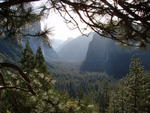Wednesday, July 10, 2019, 10:28 AM PDT (Wednesday, July 10, 2019, 17:28 UTC)
COSO VOLCANIC FIELD VOLCANO (VNUM #323180)
36°1'48" N 117°49'12" W, Summit Elevation 7874 ft (2400 m)
Current Volcano Alert Level: NORMAL
Current Aviation Color Code: GREEN
The seismic activity that started on the evening of July 5 at the southern margin of Coso Volcanic Field in Inyo County, California continues at a rate of about 600 M1.0 or greater earthquakes per day. The activity was triggered by a magnitude M5.4 earthquake at 9:19 PM PDT located 20 km (~20 miles) ESE of Little Lake, which itself was an aftershock of the M7.1 earthquake that occurred about an hour earlier on the 5th, located 17 km NNE of Ridgecrest to the south. The intensity of the activity at Coso is gradually declining. Of the approximately 1600 earthquakes detected at M1.0 or above since July 8, only 12 have been M3.0 or above, with the largest two registering M4.1.
The current activity at Coso can be considered distant aftershocks, or triggered earthquakes. The M7.1 on July 5 occurred on a NW-trending fault oriented toward the Coso area, and it is common for large earthquakes to cause aftershocks beyond the actual fault rupture. No ground deformation indicative of volcanic activity has been detected, and there is no imminent threat of an eruption. The California Volcano Observatory will continue to monitor the situation for any sign of volcanic activity and provide updates as warranted.
Where to go for additional information:
- https://volcanoes.usgs.gov/volcanoes/coso_volcanic_field/
- https://earthquake.usgs.gov/earthquakes/map/
Latitude: 36.03° N
Longitude: 117.82° W
The Coso Volcanic Field is located on the eastern side of the Sierra Nevada mountains at the northern end of the Mojave Desert, about 64 km (~40 miles) north of Ridgecrest. The field covers about 150 square miles primarily within the Naval Air Weapons Station at China Lake, and is comprised of lava domes, lava flows, and cinder cones erupted over the past 250,000 years. The most recent eruption was about 40,000 years ago.
The U.S. Geological Survey will continue to monitor these volcanoes closely and will issue additional updates and changes in alert level as warranted. For a definition of alert levels see http://volcanoes.usgs.gov/activity/alertsystem/icons.php.
As part of the U.S. Geological Survey's Volcano Hazards Program, the California Volcano Observatory aims to advance scientific understanding of volcanic processes and lessen the harmful impacts of volcanic activity in the volcanically active areas of California and Nevada. For additional USGS CalVO volcano information, background, images, and other graphics visit http://volcanoes.usgs.gov/observatories/calvo/. For general information on the USGS Volcano Hazard Program http://volcanoes.usgs.gov. Statewide seismic information for California and Nevada can be found at http://earthquake.usgs.gov/earthquakes/recenteqscanv/.


